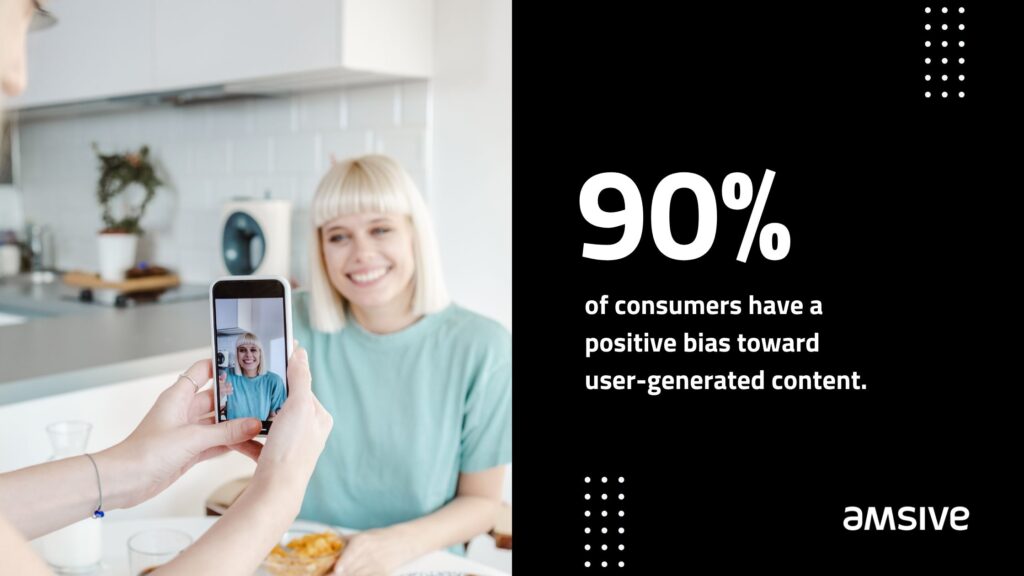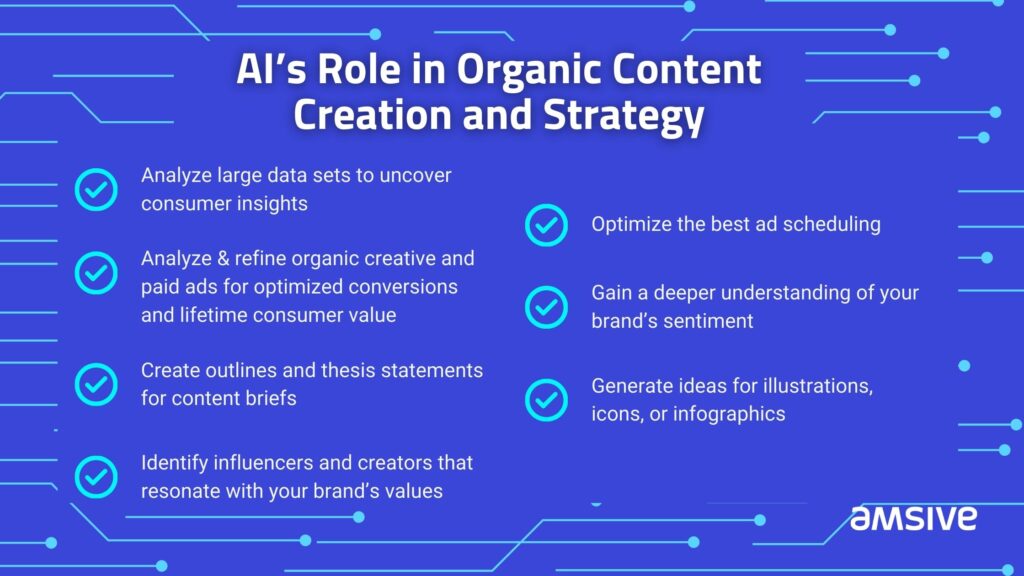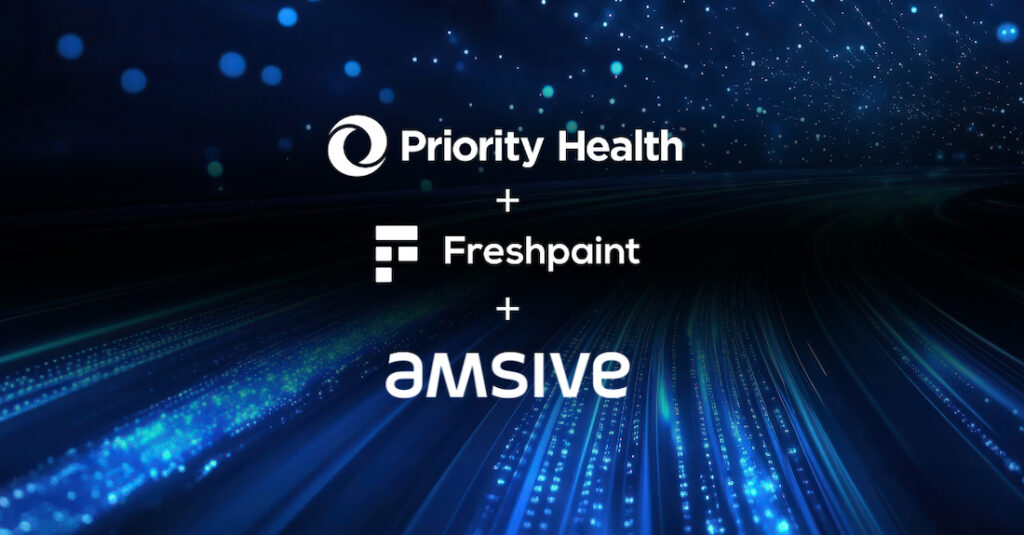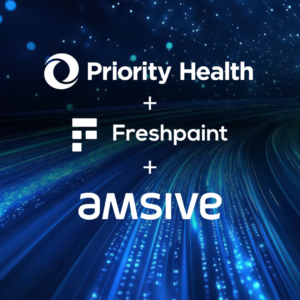As AI use continues to grow, the question of maintaining a human connection in brand building and social media presence has become an important concern for both consumers and marketers. The fear that AI, particularly GenAI, may eventually completely replace human input on certain channels is a valid and nuanced concern. With consumers acutely aware of the rising use and popularity of AI, they actively seek out human connection and confirmation on platforms that are increasingly influenced by AI.
According to Sprout Social, over 90% of people believe that social networks have the power to connect people. According to the Pew Research Center, younger generations are increasingly placing their trust in information that they find on social media. As deep fakes and misinformation accelerate, especially during this election year, it’s more important than ever that brands emphasize their authenticity and build connections with consumers.
Jump To:
Consumers Want Human Connections
One of the primary concerns that both consumers and marketers hold is that AI and GenAI will completely usurp and negate the impact of real people in the marketing sphere. While this concern may be valid to a degree, it doesn’t hold the same amount of water that a lot of people believe it does. Although marketers are utilizing GenAI, most of them aren’t using it as the single source of truth for their production cycle. According to Hubspot, only 6% of marketers fully rely on GenAI to generate whole pieces of content.
Nearly half of all marketers that use GenAI to write copy subsequently edit the output. The same can be said for developing imagery. GenAI needs the support of human experience and perspective for the final deliverable because when content is fully made by AI, the copy and the creative tend to come out a bit, well, robotic. Another 45% of marketers use AI as a source of inspiration. AI is currently primarily being used as an assistant, not as a fellow copywriter on their team. While this adoption is widespread, it’s also relatively slow-going. Of the roughly 100 million annual users in 2023, ChatGPT only saw a quarter of their user base using the product daily. While this adoption is widespread, most of its users arrive through direct channels. Of the roughly 100 million weekly users reached in 2023, 64.53% are between the ages of 18 to 34 years old.
Consumers are also actively seeking out human connections on the platforms that are gaining traction with AI use, and creators and agencies are aware of that. With SERPs flooded with spam sites, Google created a two-pronged strategy to combat the wave of false sites and spam information. They turned to AI to fight spam (and the jury is still out on whether or not it’s working), and they introduced their “Perspectives” feature.
Google’s Perspectives feature was created with the goal of offering users unique human perspectives together on a given search. Shown as either a filter or a direct search result, Perspectives compiles comments from consumers, creators, and influencers from various social media platforms. Bringing these commentaries together offers the searcher an authentic and undeniably human perspective on a given topic.
Beyond Google’s Perspectives, it is imperative now more than ever that brands and businesses prioritize an authentic brand-consumer relationship when creating their people-first, assistance-focused, forward-facing content.
Influencer- and User-Generated Content
Influencer-generated content (IGC) is one way to ensure that your social media has a distinctly human presence but also removes the pressure of being able to maintain and scale content creation. It can also help humanize the brand and set the tone of the relationship between and brand and consumers. These days, you would be hard-pressed to find a single consumer on social media who hasn’t interacted with an influencer’s content at least once. 63% of internet users across generations have interacted with a sponsored influencer post. Both brands and customers are increasingly looking to influencers as a source of reliability.
User-generated content (UGC) is also increasingly widespread. Consumers are more likely to trust reviews by fellow consumers who go out of their way to promote a product without compensation. It’s estimated that 90% of consumers have a positive bias toward UGC, beating out the influence of search engine results and promotional emails. In 2018, ads featuring user-generated content received 73% more positive comments than typical branded content.

With the increased emphasis on authenticity and transparency in advertising, consumers are increasingly relying on one another for their experience with a brand or product.
Bring Consumers Behind the Scenes
Get Ready with Me and Outfit of The Day content has signaled consumers’ interest in the people behind a brand presence. Behind-the-scenes content is increasingly used to help businesses grow their follower count by showcasing the effort that goes into creating their products. With the increased emphasis on authenticity, showing consumers the wizard behind the curtain can help to humanize a brand. This content ranges from product ideation or creation, office, store, workshop, or workspace tours, culture and values, or day-in-the-life content.
AI’s Role in Organic Content Creation and Strategy
AI has several functions that can take the time and guesswork out of optimizing your organic content and data. These include:
Content Creation
AI plays a crucial role in various stages of content creation, streamlining processes from ideation to editing. Leveraging AI to spark creativity initiates the content process and extends the possibilities of ideas beyond your usual thinking, ultimately reducing the time spent on content creation and creating more impactful content ideas. By using AI, you can bypass the initial stages of starting from scratch, getting to the core of content ideas through different prompts and interactive “conversation” with the system. The efficiency of using GenAI as a launching pad for content brainstorming allows social media marketing teams to keep up with the scale of content development and management for modern brands.
In addition to idea generation, AI can help with visual content creation. It has the capability not only to generate new imagery but also to edit existing visuals. This functionality can consolidate time and effort. With the ability to receive direct feedback and input it into the AI program, creative pieces can be swiftly modified, enhancing the overall efficiency of the content creation workflow.
Soci’s new Genius Social tool is built specifically for multi-location enterprises focusing on locality. Franchises now have the ability to develop hyper-local content calendars with Soci’s AI automation, creating unique, locally relevant, and, most importantly, on-brand social content for locations across the country. Soci is also using AI to streamline customer engagement, crafting personalized, on-brand responses consistent across all locations. This saves local managers valuable time while ensuring customers receive timely and effective support.
Post Scheduling
AI can analyze consumer behavior and engagement patterns, offering a more informed and strategic posting schedule, whether it’s for blog content or social media posts. By leveraging historical data, machine learning models can delve into factors like time of the day, day of the week, time zone, and user activity to optimize posting schedules for efficiency and reach.
AI-powered social publishing tools like Socialflow allow marketers to upload content to a publishing queue that is then optimized to be distributed during peak engagement—with zero manual configuration. This fully customizable tool allows brands to maintain control while tailoring their Socialflow interface to their specific needs.
Analysis and Reporting
The use of AI in analysis and reporting cuts down the amount of time that marketers need to spend parsing through large data sets themselves. AI can process large volumes of data to discover pertinent patterns and trends. Automated reporting allows for real-time KPI tracking and generates more comprehensive reports. The ability to analyze data at scale can help enhance the decision-making process, allowing businesses to focus on creating, and on refining strategies and content based on AI’s data-driven insights.
Comparing Influencers for Social Media Campaigns
With 1 in 4 marketers working with influencer marketing and influencer-specific marketing projected to spend over $35 billion in 2024, brands and businesses may have a tricky task identifying creators that resonate with their brand values and their consumers. AI can automate the comparison process when narrowing down who brands work with, focusing on content quality, engagement rates, follower counts, and target demographics.
Tagger by Sprout Social allows marketers to evaluate influencer profiles on their Content Health dashboard. AI-generated insights are based on the influencer’s historical metrics, including engagement by content type, social platform, or other unique metrics. Comparing these metrics at a high level can help ensure that the influencer a brand chooses to work with aligns with the brand’s goals and will resonate with its target audience, leading to a more impactful campaign.
AI is also being used to simplify the often-overcomplicated matter of communicating with influencers and their agents. In 2023, Upfluence introduced a native ChatGPT integration into their software’s messaging tool. Three new AI-driven elements are designed to streamline the communication process between brands and creators. Their ChatGPT Compose element utilizes learnings from post-campaigns to craft new messages specifically tailored to specific influencers.
These tools increase efficiency by saving marketers countless hours while enhancing campaign results and ROI.
AI’s Role in Paid Content Creation and Strategy
Optimize Ads for Clicks and Conversions
AI has several applications across campaign optimization, including automated bidding and A/B testing and optimization. It allows for real-time decision-making for ad placements, adjusting strategies based on user behavior, market conditions, and competitor activities.
Platforms like Google and Fluency have integrated AI into automated bidding tactics. The algorithm optimizes individual bids for every auction, increasing the likelihood of being shown to a consumer at the best time.
Brand Sentiment Analysis and Social Listening
Understanding how a brand’s audience perceives them is essential for strategy and management. AI-powered sentiment analysis can help gauge public opinion by analyzing social media posts, comments, and mentions related to a specific brand. AI’s natural language processing (NLP) can then identify the overall sentiment as positive, negative, or neutral.
These optimizations can help a brand benefit from an understanding of the positive aspects of its persona, proactively address negative aspects, and further tailor its messaging and communications strategy to different audience segments. Platforms like Brandwatch offer the ability to monitor your brand across millions of sources, analyze consumer data for twelve months, and measure content performance with a customizable dashboard.

Ethical AI Implementation
As helpful as AI can be across workflows, marketers need to remember to prioritize ethical implementation. Transparent AI systems allow organizations and developers to trace errors, biases, or unintended consequences. Multiple developers, including Amazon and Sidewalk Labs, have created and subsequently halted projects working on AI software because their outcomes were biased or lacked ethical standards.
With Google’s gradual deprecation of third-party cookies fueling marketers’ concerns, it’s also important to be clear about consumers’ data usage and develop consent-driven marketing practices, allowing customers to opt in and out of messaging, and engaging with consumers that have previously given consent to being contacted.
Above all, emphasize the importance of human connection across all AI touchpoints, internally and externally. Regularly monitor and audit collective brand and AI use to ensure its use is held to transparent and consumer-focused standards. The best uses of AI in your marketing practices include:
- Analyze large data sets to uncover consumer insights
- Analyze and refine organic creative and paid ads for optimized conversions and lifetime consumer value
- Create main topic and thesis statements for blog content briefs
- Identify influencers and creators that resonate with your brand’s values
- Optimize the best ad scheduling
- Gain a deeper understanding of your brand’s sentiment
- Generate ideas for illustrations, icons, or infographics
Learn more about the do’s and don’ts of AI-assisted campaign creative, or let’s talk about achieving more for your marketing—and your business.







